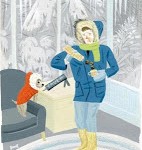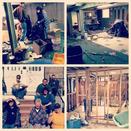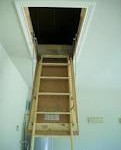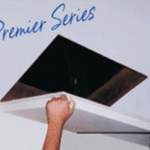 According to CBS News, about 150,000 homes on Long Island, New York still do not have power. The storm was on the 29th of October. Today is November 11th. That’s about two weeks without electricity. I’m quite certain that most of those 150, 000 homeowners who still have no power have considered every possible manner of winterizing their houses for maximum warmth. And, even if you have have no break in your electricity, it’s never too late to winterize your home.
According to CBS News, about 150,000 homes on Long Island, New York still do not have power. The storm was on the 29th of October. Today is November 11th. That’s about two weeks without electricity. I’m quite certain that most of those 150, 000 homeowners who still have no power have considered every possible manner of winterizing their houses for maximum warmth. And, even if you have have no break in your electricity, it’s never too late to winterize your home.
There are a number of websites that offer good advice on why and how to winterize various aspects of your house. Rather than reinvent the wheel, I’ve outlined what some of the top-rated articles have to offer and then added my additional two cents worth in the summary.
I. The Boston Globe summarizes, How to winterize your home: A procrastinator’s manual with 8 tips
Some notable tips include, 1) Make sure that your windows are all locked, which ensures the weather seal is tight. 2) Insulate the wood rim joist that separates the foundation from the upper wood framing. Most homes are uninsulated here. 3) Make sure the fireplace flue is closed when not in use. Even if you use your fireplace regularly, you can close it when not in use and add a note to the fireplace mantle.
II. MSN Real Estate offers, 10 ways to winterize your home — now
Again, some of these may seem obvious, but you don’t want to overlook them. 1) Clean the gutters. When snow and ice build up on your roof, the last thing you want is to have your gutters clogged so the eventual thawing water has no outlet. 2) Reverse ceiling fans. If you have high cathedral ceilings, all the warm air is up at the ceiling. Taking time to reverse the fan direction for the winter makes sense. 3) Use window coverings. MSN recommends thin plastic films. Personally, I would rather have some nice heavy wall curtains or insulated roll-down blinds. I’ve done some work installing European-style curtains and it seems it was not just the aesthetic that governed the use of the thick, lush fabrics of wall-height curtains.
III. About.com summarizes, Winterizing Your Home: Preparing Your Home for Winter
This website paints the picture of home winterization with a broad brush. 1) Empty gas from lawnmowers. Gas attracts water, which actually can produce harmful microbes and such in a gas tank and engine. Today’s gasoline has ethanol, which attracts even more water. If you don’t empty it, use a marine-type gas stabilizer in order to condition gas in any tank so it is ready for winter. 2) Trim trees and branches. If you were just hit with hurricane Sandy, it may already be too late for this advice, However, if you have some branches dangling over your house, now would be a good time to have them cut because a sever ice storm may be just around the corner. It may be work cutting down entire trees that may fall on your house. 3) Prepare emergency items. Again, if you’ve been a victim of a hurricane, you may have realized this need in hindsight. Emergency flashlights, batteries, matches, emergency water, canned/dry food. These are all common items. But you may want to take it a step further and get some wick laps that burn low-smoke oils (with some oil, of course), a generator, plenty of gasoline in 5 gallon jugs, a wood-burining stove, and, just in case, a bug-out bag, just in case you have to flee from your warm and cozy home due to some emergency situation.
A couple of options these articles overlooked include, firstly, winterizing the hatch to your attic. This is perhaps the greatest source of heat loss in many homes. Secondly, if you have the money and a flair for unique interior designs, consider beautiful cloth wall coverings in the rooms of your home. Many old European homes have unitized cloth wall surface coverings, sometimes known as wall fabric. It may have helped to cover cracking plaster, but you can choose it for its insulation value and its unique aesthetic. The installation may include a foam underlayment which will give a room an added warm and an extra sense of peace and quiet. This website offers some classic visual examples. A home in the Hamptons utilized Thibaut grasscloth wall covering, which may also be used on an insulated under-lament.
If you have procrastinated, it’s not too late to take some measures to winterize your home. Because I have a degree in architecture and design, and experience in interior design as well, I can also help you with selecting and implementing cloth wall coverings for your home. Why not winterize your home with a little bit of style?
Tags: tips for winterizing home, how to winterize you house, prepare your house for winter, make energy efficient house, most effective insulating techniques, winterize your home with style,
Thumb image of un-winterized home from Boston Globe.
 SHI has lowered the fee for a home inspection of up to four bedrooms including a basement. It used to be $500 and now it is $425 with no extra travel fees or hidden costs for any location in Suffolk County NY! Because of inflation, this price will not be indefinite. So call at the time of your inspection to verify the current price. Give us a call at 631 377 2046.
SHI has lowered the fee for a home inspection of up to four bedrooms including a basement. It used to be $500 and now it is $425 with no extra travel fees or hidden costs for any location in Suffolk County NY! Because of inflation, this price will not be indefinite. So call at the time of your inspection to verify the current price. Give us a call at 631 377 2046.


